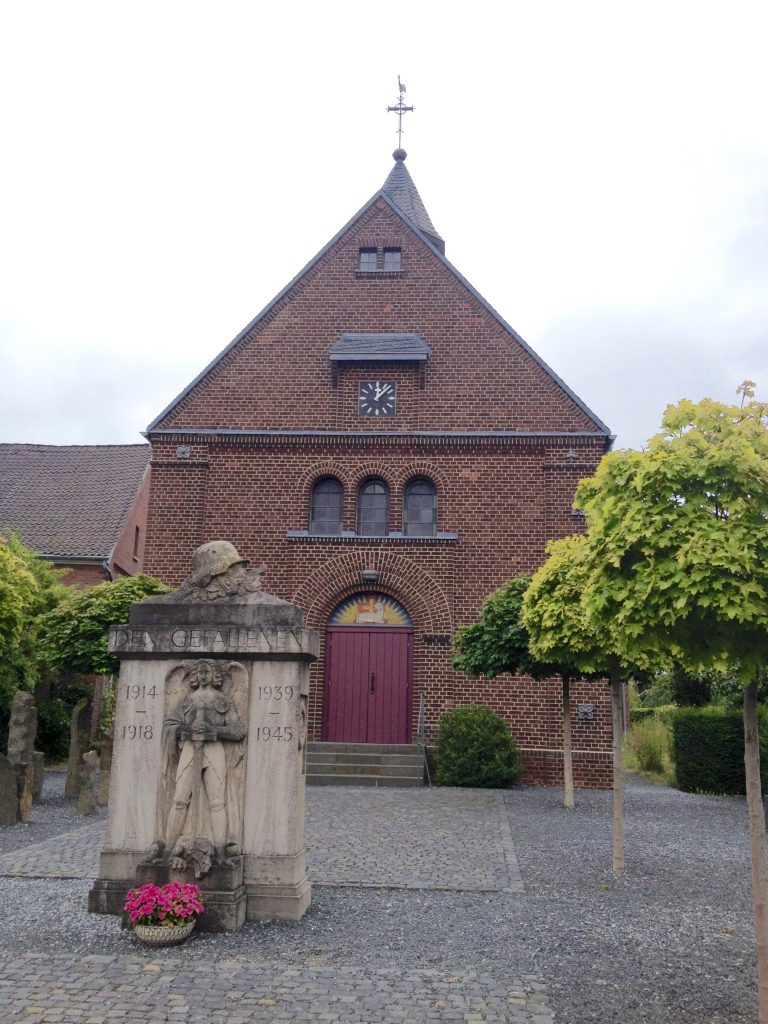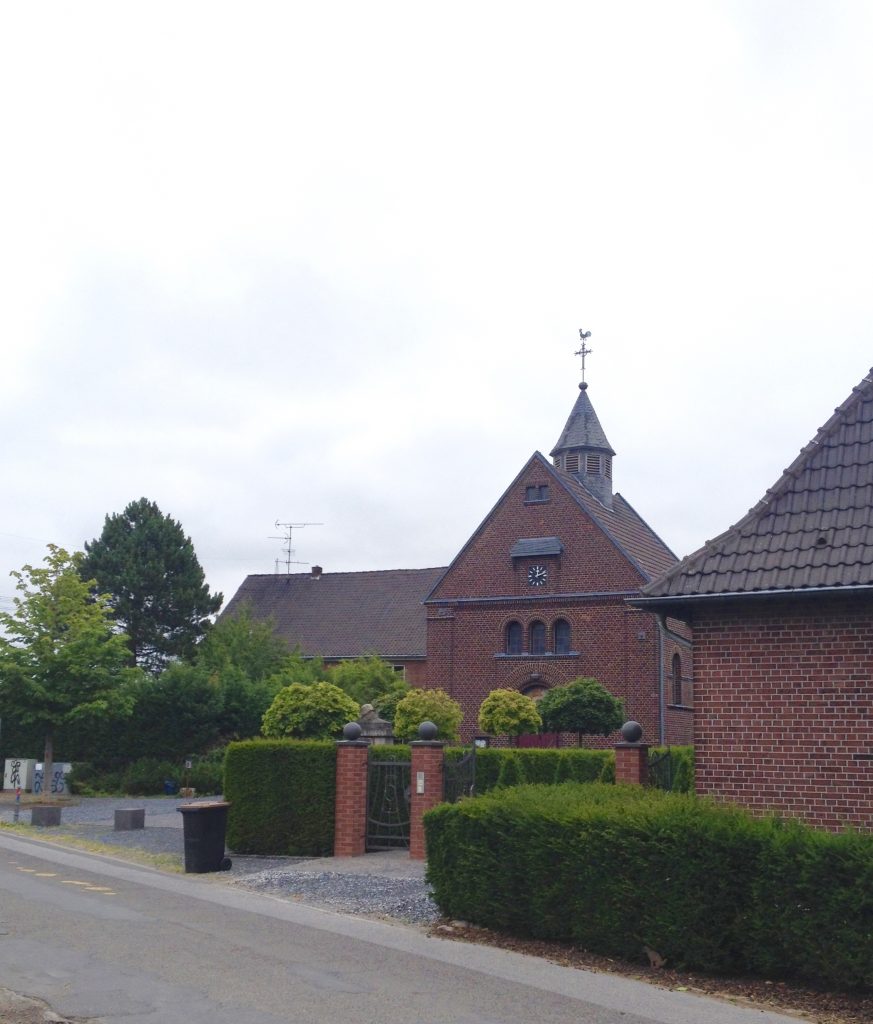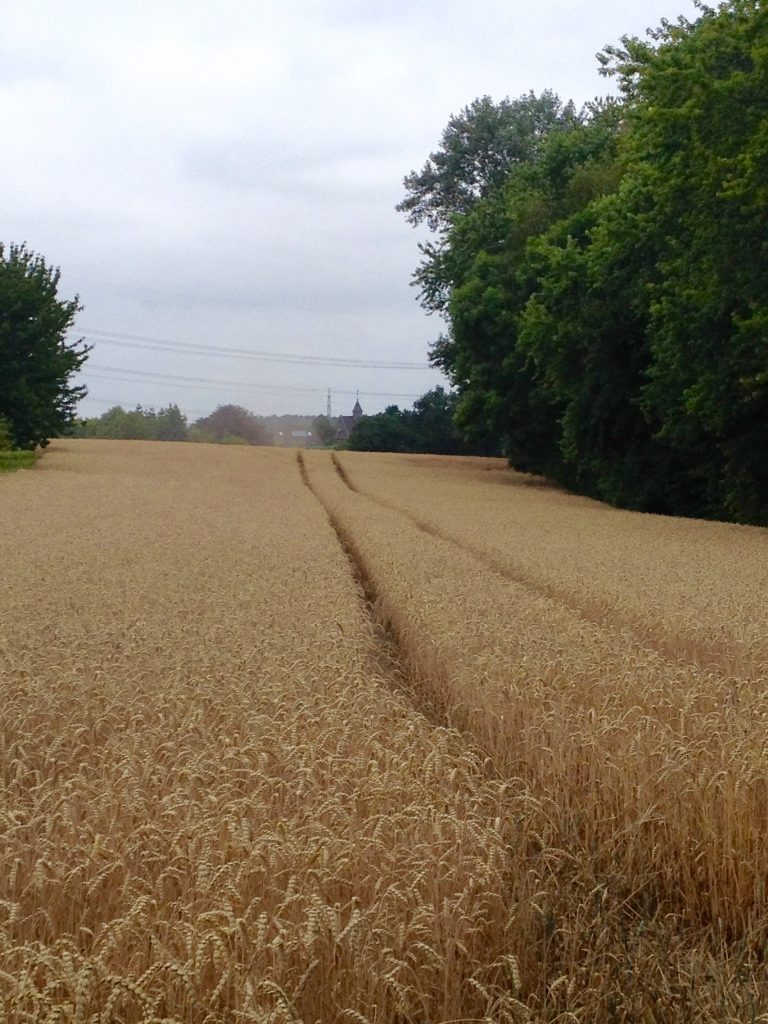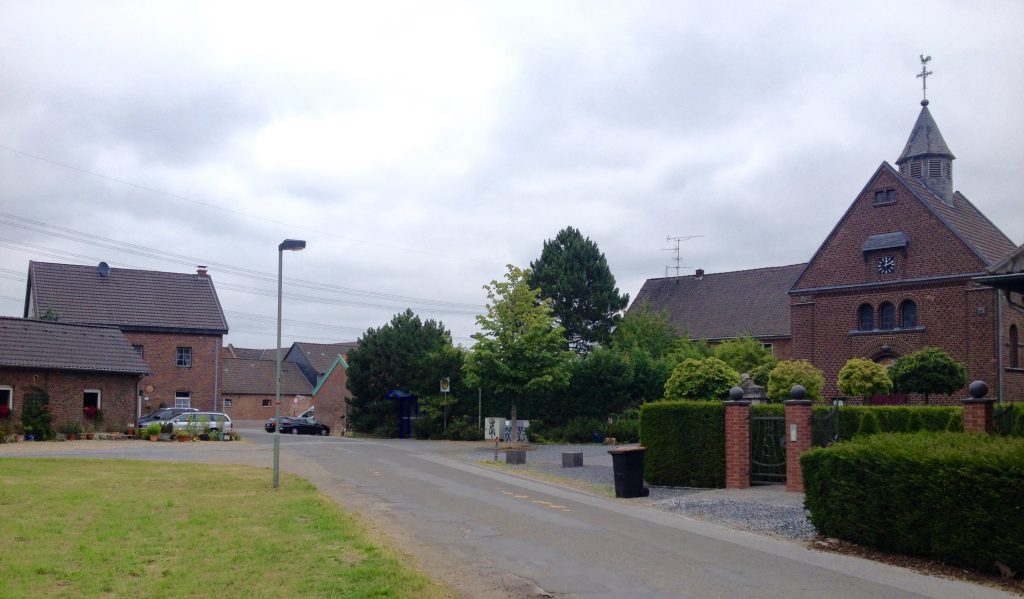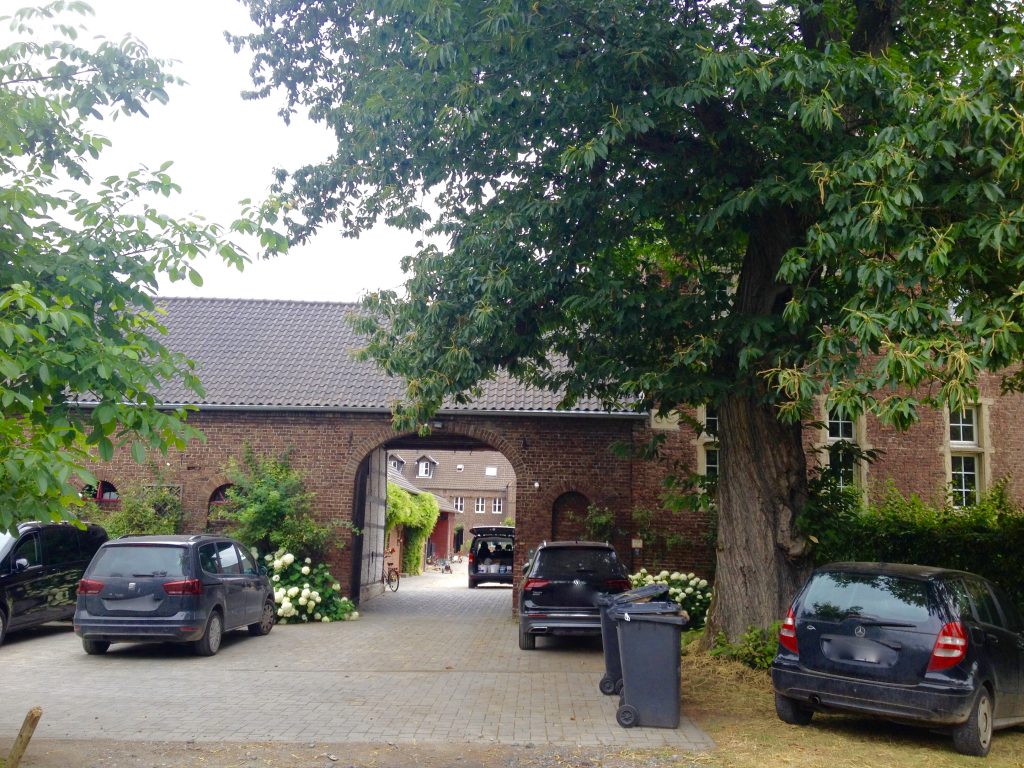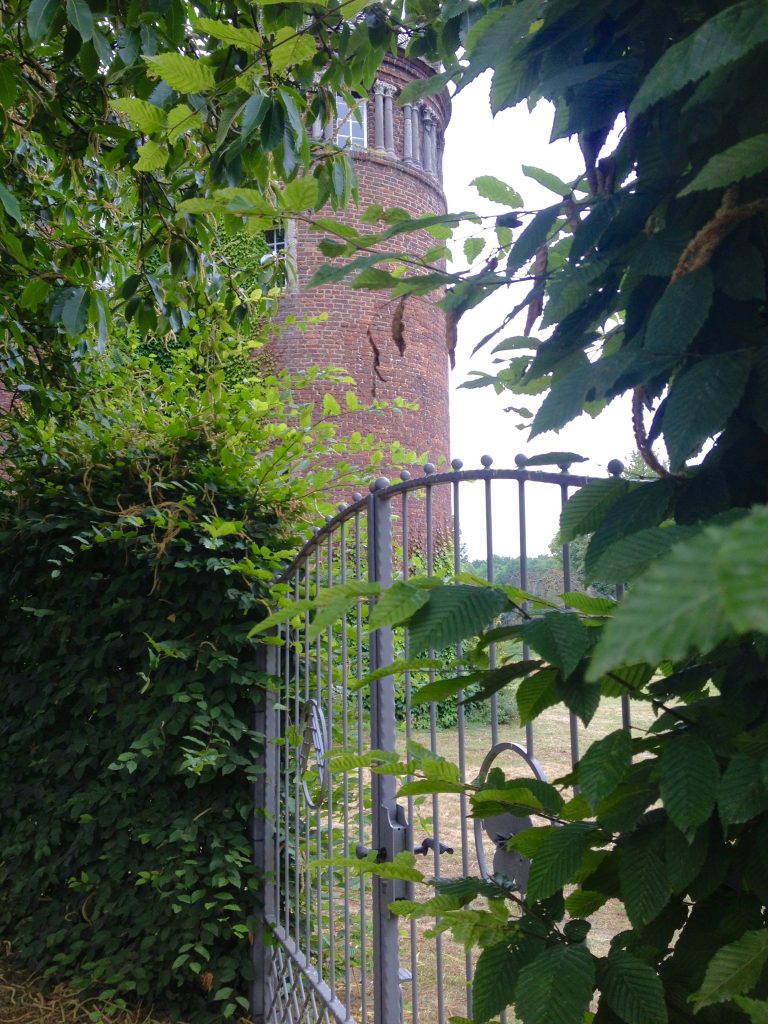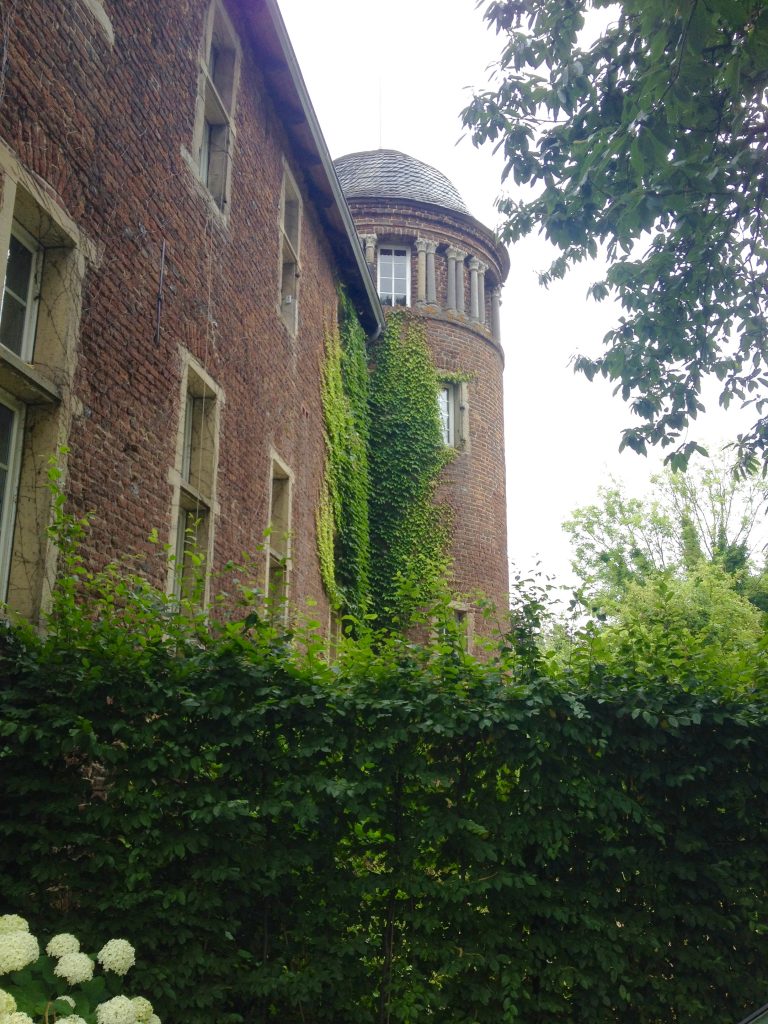Including so many of the locations from The Devil’s Missal and The Devil’s Progeny.
Haus Gripswald
A lovely drawing of Haus Gripswald
As you enter the Herrenbusch by Haus Gripswald there is the obligatory information board for visitors complete with map and basic local history. This one has a rather lovely sketch of Haus Gripswald which gives a much better impression of the place than any photograph can, as so much of the house is masked by trees.

The St. Pankratius chapel in Ossum, Meerbusch
One of the secret treasures of Meerbusch is the beautiful chapel of Saint Pankratius at Ossum.
St. Pankriatus Church was built in the 12th century as a private chapel to the Court of Grevenhof. The chapel itself is first documented in 1186, but Roman hand millstones, which were used in the construction of the choir of the chapel, and archeological finds dating from the Carolingian era indicate much earlier settlements.
Unlike other own churches in the region, St. Pankratius never became an independent parish church, but remained as a subsidiary branch of St. Stephanus church in Lank Latum.
In 1868 the Romanesque choir had fallen into disrepair and had to be demolished. It was replaced with a new neo-Romanesque polygonal choir. From 1900, an increase in the local population necessitated the building of an extension of the chapel on the western side.
In The Devil’s Missal the chapel provides a resonant setting for one of the crucial scenes in the story.
A flying visit to Haus Gripswald
I was driving past Ossum today and I couldn’t resist pulling over in the car and walking up through the woods to Haus Gripswald, which is the evocative setting for two of the key scenes in The Devil’s Missal (no spoilers though).
